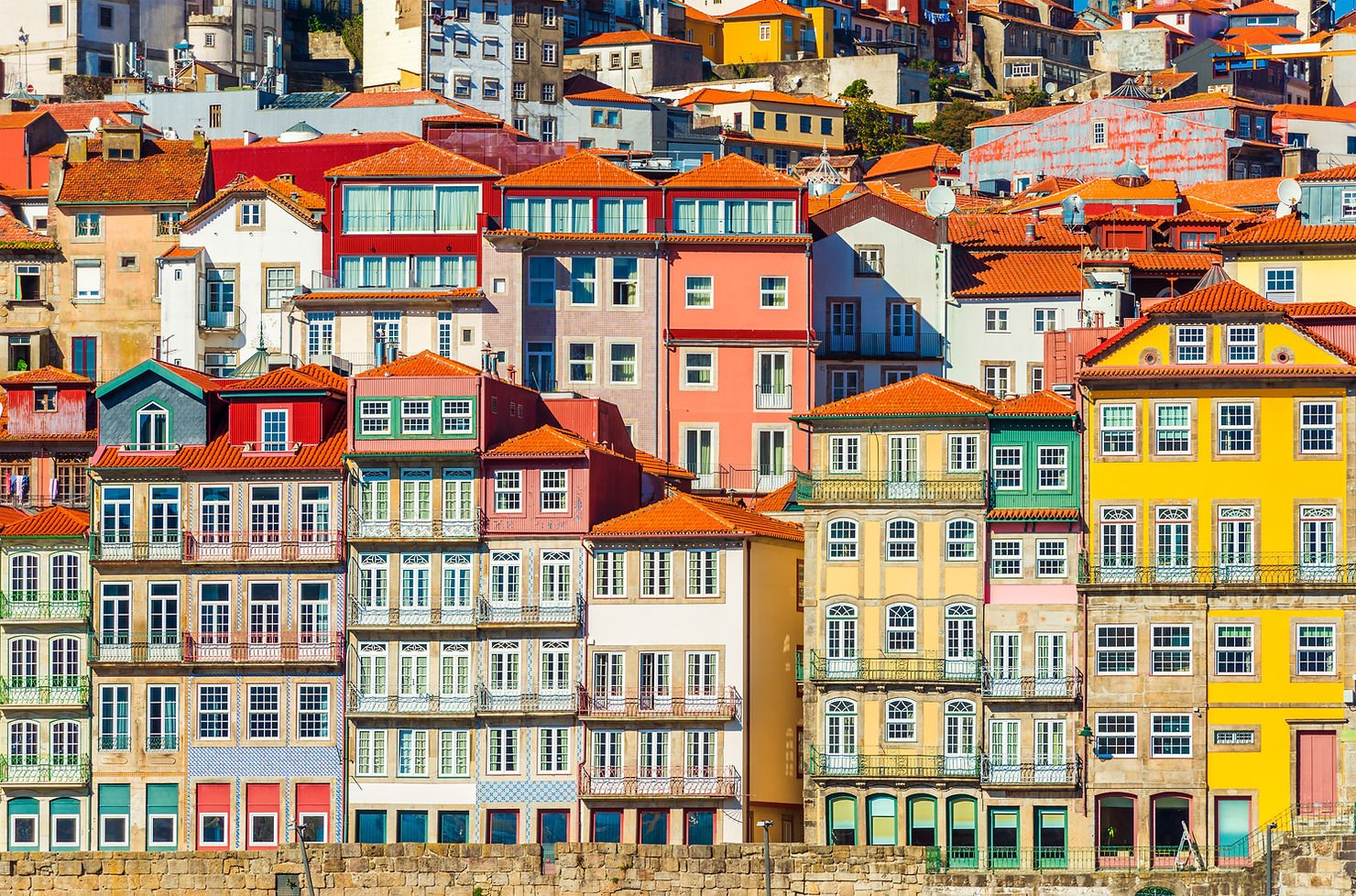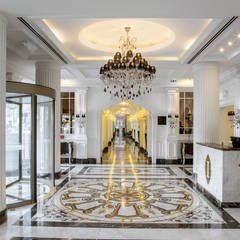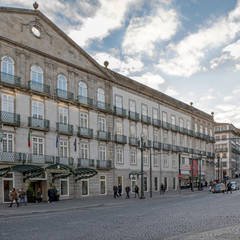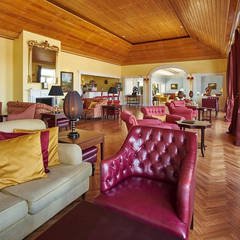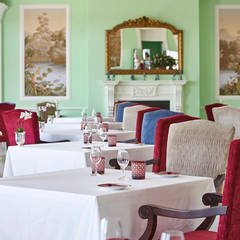Destination Guide: Porto
Overview
Portugal's second city is a culturally rich destination that, unlike many other cities in its place, confidently seduces its visitors with all the charms you look for in Europe. While others beg for your attention, Porto quietly draws you down to the river and invites you to sit and marvel at her centuries of evolution. Stone buildings, colorful homes, and charming eateries nestle up to one another along the banks of the Douro.
Porto has largely avoided the trauma of warfare or natural disasters that have forced other European cities to remake themselves. As a result, there’s an ethos of reinvention that struggles to rally around a pre-/post- point in time. This explains why you have not only modern structures stitched in the fabric of the city, but you find vacant and abandoned sections that haven’t been touched for decades, slowly conceding to the earth. But it’s beautiful and interesting.
Six bridges span the Douro River into Porto’s twin city, called Vila Nova de Gaia. If you didn’t know any better, you would assume these are one place. Also known as just Gaia, the city is where the Port houses invite visitors for a taste and a tour. Three miles down the river are the Atlantic Ocean and the beachy neighborhood of Matosinhos with a huge municipal park. Porto treats visitors to historical sites, the beach, shopping, amazing food with live music, and a vibrant nightlife. There is something for everyone in Porto.
Food to Try
Portugal, in general, is known for having delicious cuisine. A unique and very common snack is the Francesinha. There are many variations, but almost all are made with ham, Portuguese sausage (linguiça), meat, cheese, and a red beer sauce. If you love a Croque Monsieur, then you will love the Francesinha. Cod is the most common fish to find and you’ll see it called bacalhau. A common local cod dish is Bacalhau à Gomes de sá, a casserole that includes potatoes, eggs, and olives.
The Portuguese have access to similar proteins as Spain, so you’ll see many dishes composed of less common pig parts, fresh seafood stews, and small plates like grilled sardines. For the adventurous eaters, one such dish is Tripas à Moda do Porto. This is the traditional dish of Porto and is composed of tripe (cow stomach), white beans, carrots, and rice.
The Douro Valley provides several drink options to accompany your meals. Port wine has been the star here for centuries and you can only get ‘Port’ from Portugal because of EU Designation of Origin guidelines. Port is a wine fortified with aguardiente (commonly referred to as brandy). As mentioned, across the river from Porto in Vila Nova de Gaia are the port houses that fortify and age the wines. If you love port or are even port-curious, then you must try them from the source. If the taste of port is too much, try it in a mixed drink like a Port tonic.
But port isn’t the only quaff to enjoy. Vinho Verde is a crisp and refreshing style of wine that has traditionally been grown in the Minho province, just north of Porto. The name means ‘green wine,’ but the best translation is ‘young wine,’ because the wines are available around three to six months after harvest. These wines are available around the world and are very affordable, so try some out before your visit.
For non-wine drinkers, Super Bock is a very common Portuguese pilsner beer that you will find everywhere. If you’re avoiding alcohol, then try a Sumol Ananás, a pineapple soft drink. Coffee lovers should taste an espresso over ice with lemon, called a Mazagran.
Communication
In the tourism sector, nearly everyone speaks English. While it’s always a good idea to learn a few basic words in the local language, you can get by without it in Porto. Even if you speak Spanish, the locals likely prefer to speak English with you.
Transportation Options
Porto and Lisbon are both hilly places, but they are really enjoyable on foot. If climbing up and down hills is a challenge, Porto has a small metro system, buses, and several small trolley lines. You can drive in Porto, but the roads are small and parking can be tough. If you need a private car, Uber is currently the only ride-share or you can find a taxi. In certain areas near the river, you can find auto-rickshaws. During our visit, we hopped into one of these to cross the bridge and visit the port houses. A fun way to get around, for sure!
Things to Do
Tour the old city
At the University of Porto, you’ll find many places worth seeing that surround this block. To the north of the university are the twin Baroque churches called Igreja dos Carmelitas and Igreja do Carmo. Built about 100 years apart, these churches give viewers a side-by-side glimpse of Baroque/Rococo architectural styles. One block to the east is Livraria Lello, a bookstore believed to have inspired JK Rowling when she lived here and wrote Harry Potter. From there, walk along Praça da Lisboa, a modern green space above shops, to Igreja dos Clérigos. This is also Baroque style but has a 250-foot tower you can climb to get a bird's eye view of Porto and Gaia. Once again walk along the park to the Portuguese Center of Photography. Go inside to see the exhibits that are located in a former courthouse and prison up until 1974. If you’re not too wiped out by now, then head through the plaza to the University. This is the location of the Natural History and Science Museum.
Beach day
Castelo do Queijo - Fort in Portugal along Matosinhos Beach
The beaches of Matosinhos are a popular spot to relax your legs after walking the hills of Porto. Pack a picnic or make a lunch reservation at one of the restaurants near the water. It’s the Atlantic, so the water can be chilly, but in the summer this is a nice relief from the sun. There is a path that stretches from the Douro to the shipping port, so there is a safe place to walk, ride and see the spectacular coast. Some sections are rocky, but the designated beach areas are large, sandy, and clean.
Day trip to the Douro Valley
If you are at all interested in wines and/or port, then this must be on your list. The Douro Valley straddles the Douro River and its steep slopes are covered in grapevines. The slopes are so steep that the land has been terraced to safely grow and harvest the grapes. Pictures do not accurately show how massive the hills are surrounding the river. The wine estates, called Quintas, are scattered throughout and many offer tastings and tours. Private tours are the best way to do this in a day so you can sit back, learn about the region, and savor the flavors of the valley safely. You can take a slow train from Porto, but you will want to stay in the Valley to make this worth the effort.
Serralves
Following the 1974 revolution that resulted in Portugal’s democracy, social groups demanded a public space for art. The product of that movement is Serralves, a museum complex that is now one of the top-visited museums in Europe. It’s composed of a pink art deco villa called Casa de Serralves, a 45-acre park with a treetop walkway, a movie house, and a contemporary art museum. There are no permanent installations, and exhibits change five times a year, so check online to see what is scheduled during your visit. On the last weekend in May, they host a huge festival on the property.
Port crawl in (Vila Nova de) Gaia
If you’re staying in the Ribeira neighborhood directly across from Gaia, then walk across the Luis I Bridge (top and bottom are both great) and explore the neighborhood. Research a few port houses to find the type you are looking for. Some offer tours, some have outdoor space, and some are better for dogs or kids. There are a variety of restaurants nearby and some will fill up, so reservations are a good idea. Back toward the Luis I Bridge and on the upper level is a great park area with grass and a playground. The views back towards Porto are spectacular, and this is a fantastic location to watch the sunset.
Destination Fun Facts
Gustave Eiffel designed the Maria Pia bridge, which spans the Douro River. A disciple of his, who worked on that bridge, Theophile Seyrig, beat Eiffel’s design for the Dom Luis 1 bridge. This bridge is west of Eiffel’s bridge and is often confused with it. Porto is known as the city of bridges.
The largest street festival in the world takes place on June 23-24 in Porto and celebrates São João (Saint John). Recent traditions include a midnight firework show at the Dom Luis 1 bridge and bopping each other in the head with plastic hammers.
The British and Portuguese have the oldest alliance, in effect since 1373. When this alliance was tested early in the 1880s, it was the marriage between Phillippa (Daughter of Duke of Lancaster) to King John 1 of Portugal that kept the alliance alive and eventually very fruitful for both nations.
Where to Stay
Pestana Vintage Porto
Porto, Portugal
Located in front of the Douro River in the Ribeira historic district, the Pestana Vintage Porto is a 5-star boutique hotel and also a UNESCO World Heritage Site. Guests will enjoy its relaxing location by the river and the stunning vistas of the river, bridges, and wine cellars of Gaia. All rooms vary in size with a unique vintage style and modern amenities.
InterContinental Porto-Palacio das Cardosas
Porto, Portugal
In the heart of Porto's World Heritage city center, the InterContinental Porto - Palacio das Cardosas is located in one of the most iconic 18th century buildings. Its prestigious facade compliments a beautifully renovated interior, by Alex Kravetz, characterized by elegance and contemporary luxury.
The hotel benefits the best location in the city for both leisure and business travelers; Walking distance from the major touristic attractions such as Clerigos, Lello library, Palacio da Bolsa, Ribeira and the Douro River.
Exclusive Amenities, compliments of MacMillan Travel Design -
Buffet Breakfast for each guest daily at Astoria Restaurant
Lunch or Dinner for up to two people per room, once during stay, excluding beverages, taxes, and gratuities in hotel restaurant
VIP treatment
Complimentary WiFi
The following amenities are subject to availability at the time of check-in/departure:
Upgrade
Early Check-In
Late Check-Out
The Yeatman
Vila Nova de Gaia, Portugal
The Yeatman is a luxury wine hotel and spa in Porto with spectacular views over the UNESCO World Heritage City and the Douro River. Member of the prestigious Relais & Châteaux collection of hotels and with a restaurant by Chef Ricardo Costa distinguished with two Michelin Stars, The Yeatman is widely regarded as the best hotel in Porto and is a unique and distinctive landmark in the world of classic luxury hotels. Set amidst the Port wine lodges, The Yeatman nestles on a hill, overlooking Porto and is set within 7 acres of land, and has outdoor and indoor infinity swimming pools. All of The Yeatman's spacious rooms and suites have panoramic views and a private terrace.
Exclusive Amenities, compliments of MacMillan Travel Design -
$100 USD equivalent Spa credit, per room, per stay
Welcome Amenity
The following amenities are subject to availability at the time of check-in/departure:
Upgrade
Early Check-in
Late Check-out

